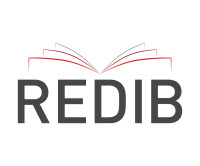Prueba
Resumen
Este ensayo examina los antecedentes históricos de los pagos de compensación, y así mismo toma en consideración el impacto de la Segunda Guerra Mundial en los programas de reparación, los criterios intelectuales de compensación desarrollados por los organismos internacionales durante la segunda mitad del siglo XX y presenta ejemplos de compensación a nivel estatal después de 1975 a individuos que fueron perjudicados por acciones del Estado. Concluye considerando los documentos requeridos para probar la identidad y acreditar el daño que da lugar al derecho a una compensación.
Descargas
Citas
BROOKS, R. L. ed. (1999). When Sorry Isn’t Enough: The Controversy over Apologies and Reparations for Human Injustice. New York: New York University Press.
COLLINS, C. (2016). “Truth-Justice-Reparations Interaction Effects in Transitional Justice Practice: The Case of the ‘Valech Commission’ in Chile,” Journal of Latin American Studies, August 2016, pp. 1-28.
DE GRIEIFF, P. ed. (2006), The Handbook of Reparations. Oxford: Oxford University Press, p. 391.
GLENDON, M. A. (2001) The World Made New: Eleanor Roosevelt and the Universal of Human Rights. New York: Random House.
KRITZ, N. J. ed. (1995) Transitional Justice: How Emerging Democracies Reckon with Former Regimes, Volume III Laws, Rulings, and Reports. Washington, DC: United States Institute of Peace.
PROSS, C. (1998) Paying for the Past. Baltimore, Maryland: The Johns Hopkins University Press, p. 21.
TIMM, A. (1997) Jewish Claims against East Germany: Moral Obligations and Pragmatic Policy. Budapest, Hungary: Central European University Press.
United Nations Office of the High Commissioner for Human Rights (2008). Rule-of-Law Tools for Post-Conflict States: Reparations Programmes. New York and Geneva.
Derechos de autor 2018 Trudy Huskamp Peterson

Esta obra está bajo licencia internacional Creative Commons Reconocimiento 4.0.







.jpg)



















